Richard Friberg Bookplate Collection
Phil. Lic. Richard Friberg collected bookplates in his copy of C. M. Carlander's work "Svenska bibliotek och exlibris". In these volumes, Friberg had blank pages bound, where he attached the bookplates of his collection.
About the collection
The bookplate collection of Anders Richard Friberg (1850–1922) consists of six volumes of Swedish bookplates, glued into the extensive work of Carl Magnus Carlander, the Svenska bibliotek och exlibris. Friberg also corresponded with Carlander. One of these letters is pasted into vol. 1 of Carlander's work.
The Gothenburg University Library owns 2 letters written by Richard Friberg. One of them has artist Arthur Sjögren as its recipient, and the second one is made out to First Librarian Simon Aberstén. Both letters concern bookplate exchanges.
Aquisition history
Friberg donated the first bookplate collection acquired by the Gothenburg University Library, then the Gothenburg city library.
An interesting note is that the Västergötlands Museum has documents concerning the collections of books and bookplates once belonging to Richard Friberg. Here, too, is the estate inventory made after him. For more information, please consult the archive inventory of the Nationell arkivdatabas.
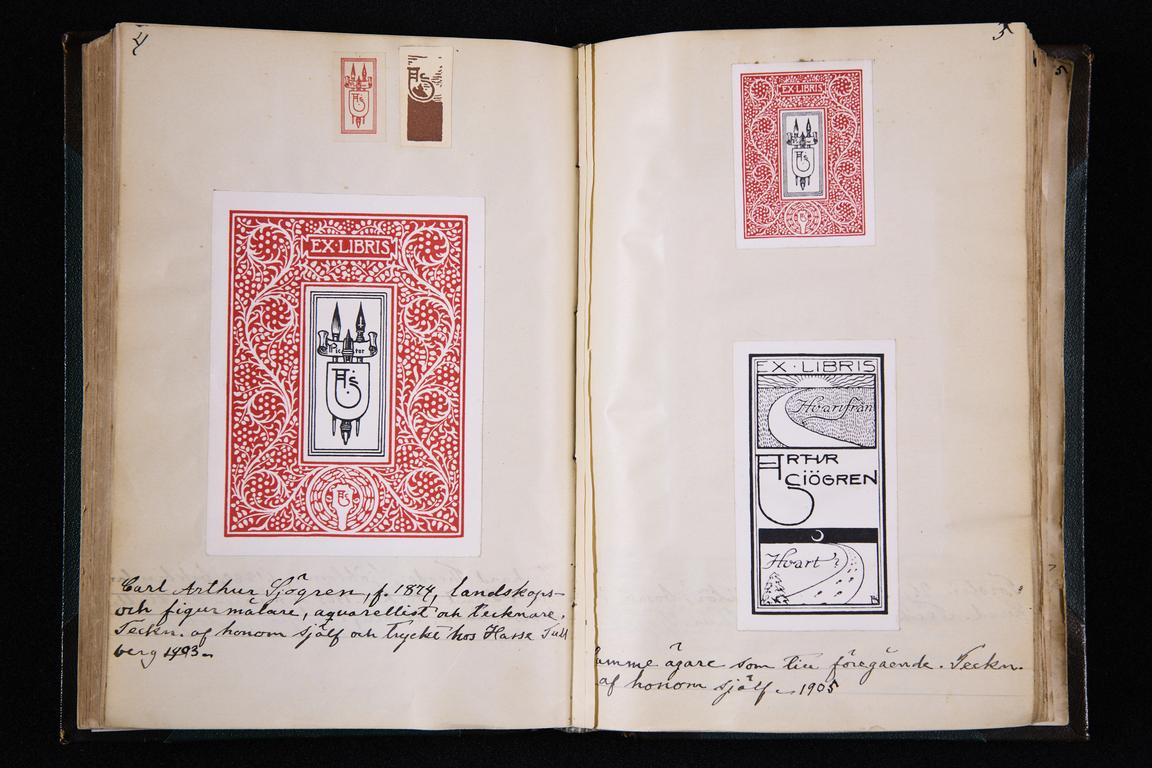
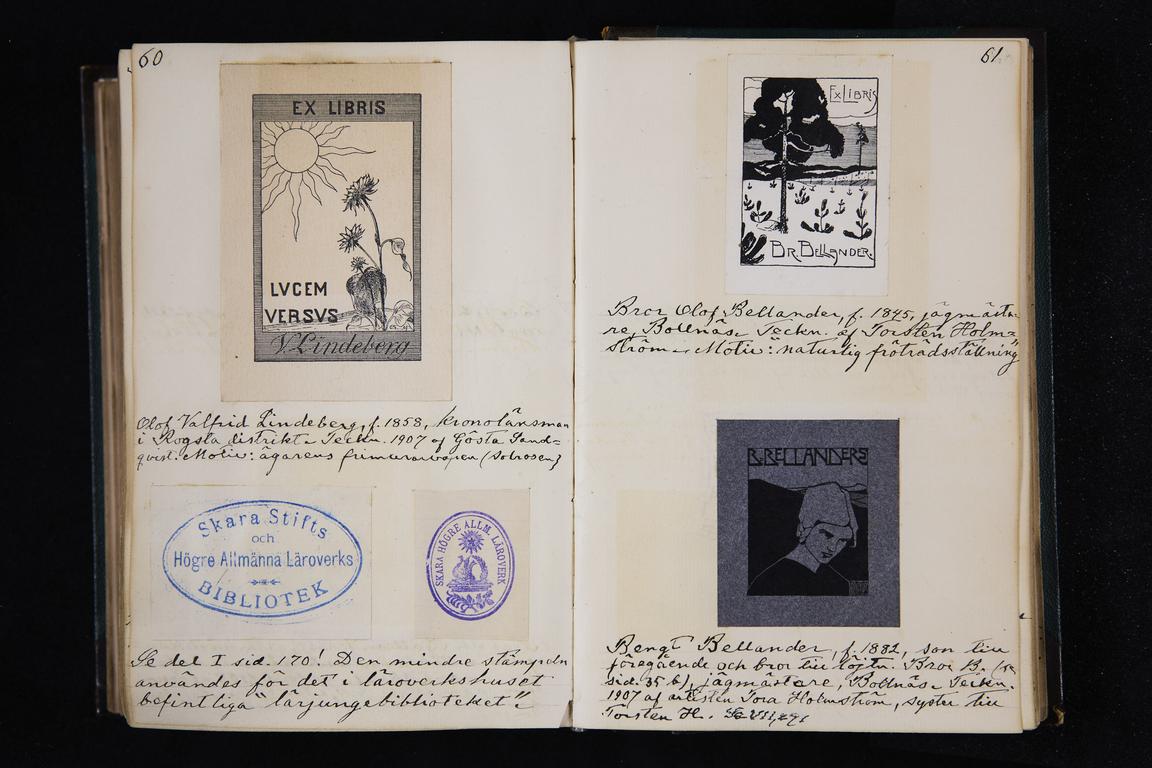
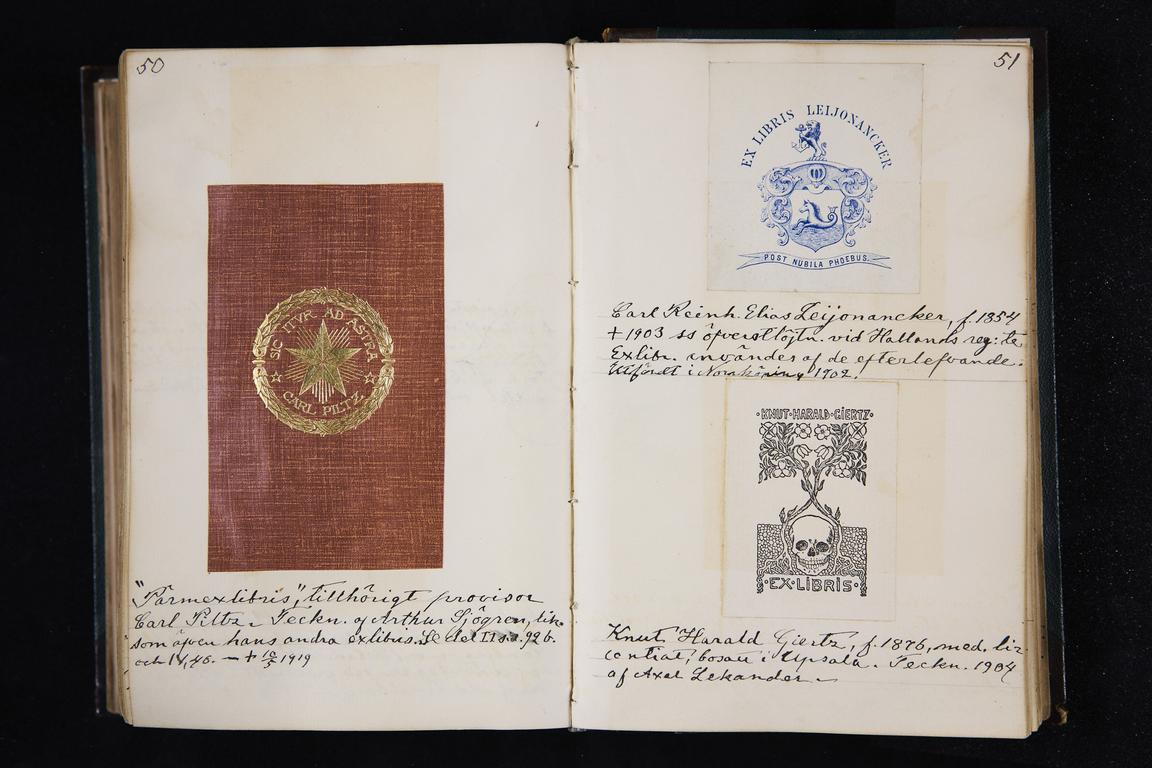
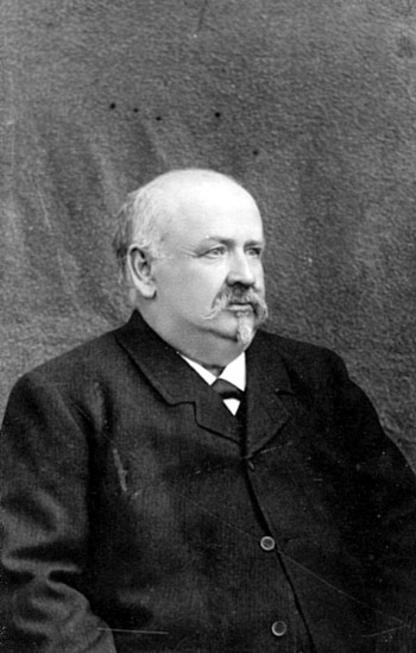
Access the collection
The collection is held in the closed stacks at the Humanities library. It is available for reading room use only.
Catalogue
The collection has not been catalogued.
There is no inventory.
Humanities library
Renströmsgatan 4
405 30 GOTHENBURG
Phone: 031-786 17 45
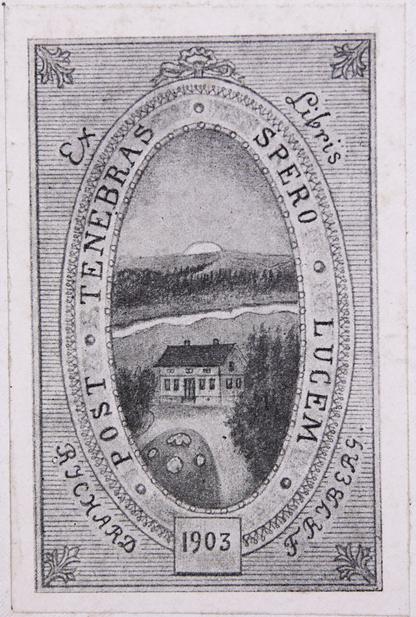
Text:
Kristina Sevo
Biography
Anders Richard Friberg was born on March 21st, 1850 at the Gingrid vicarage in the province of Västergötland. He studied to become a Phil. Lic. and resided with his brother, vicar Carl Olof Friberg at the Levene vicarage in Korsberga, in the diocese of Skara.
Friberg owned a smaller, but well curated historical library. In 1903, vicar Ernst Wennerblad designed a bookplate for Richard Friberg. It depicts the Korsberga vicarage. The house is drawn inside an oval, and around it are the words Post tenebras spero lucem "After the dark, I hope for the light."
Friberg remained a bachelor, and lived with his brother until February 15th, 1922, when he passed away.
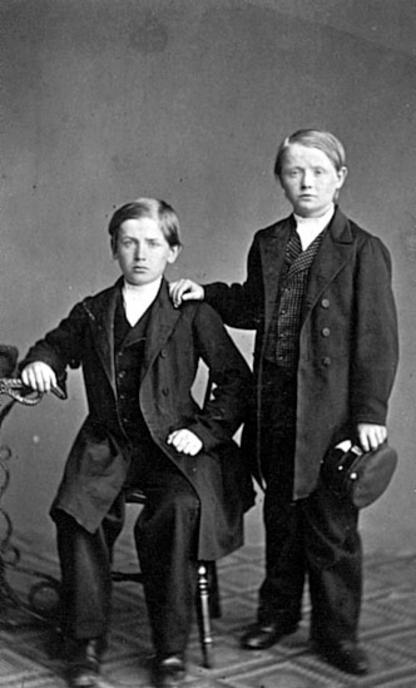
Read more
Carlander, C. M. Svenska bibliotek och exlibris. Stockholm, 1904, vol. IV, p. 966.
Exlibris-cirkuläret 2013:2, issue 68.
Friberg's bookplate on Flickr
Artist Ernst Wennerblad
Suggested research topics
- An overview of the collection's contents. What is represented here, and how does it mirror the time and context of the material?
- Biographical research
- Selection of images.
- Bookplates as an art form.
- Printing techniques.
- The structure and assembly of the collection.
- Artists represented in the collection.
Please contact us if you have any suggested research topics you would like to share!